Differentialdiagnose: Schnellender Finger vs. Subluxationsverletzung des Sagittalbandes vs. Subluxationsverletzung des Lateralbandes
abgelegt unter Auswertung
Differentialdiagnose: Schnellender Finger vs. Subluxationsverletzung des Sagittalbandes vs. Subluxationsverletzung des Lateralbandes
Handtherapeuten begegnen häufig Patienten mit Fingerschmerzen, Knacken und Schwierigkeiten beim Sehnengleiten. Zu den am häufigsten verwechselten Erkrankungen gehören auslösen Finger, Subluxation Sagittalbandverletzung und Subluxation Laterales Band. Jede dieser Pathologien beinhaltet unterschiedliche anatomische Strukturen und biomechanische Störungen, doch ihre überlappenden klinischen Merkmale können eine genaue Diagnose erschweren. Das Verständnis der subtilen Unterschiede im Erscheinungsbild und die Durchführung gezielter körperlicher Untersuchungen sind für eine angemessene Behandlungsplanung entscheidend.
Abzugsfinger Bei der stenosierenden Sehnenscheidenentzündung (Tendovaginitis stenosans) handelt es sich um eine Erkrankung, bei der die Beugesehne am A1-Ringband eingeklemmt wird, typischerweise aufgrund einer Verdickung oder Entzündung des Sehnen- oder Ringbandsystems. Patienten berichten häufig von einem schmerzhaften Gefühl des Einklemmens oder Blockierens im Bereich des Metakarpophalangealgelenks (MCP-Gelenk), am häufigsten im Mittel- oder Ringfinger. Bei der Untersuchung verläuft die passive Beugung typischerweise reibungslos, während die aktive Streckung auf Widerstand stoßen kann, gefolgt von einer plötzlichen Entspannung. Daher der Begriff „auslösen”-Effekt (Makkouk et al., 2008). Bei der Palpation zeigt sich häufig ein druckempfindlicher Knoten in der volaren MCP-Falte.
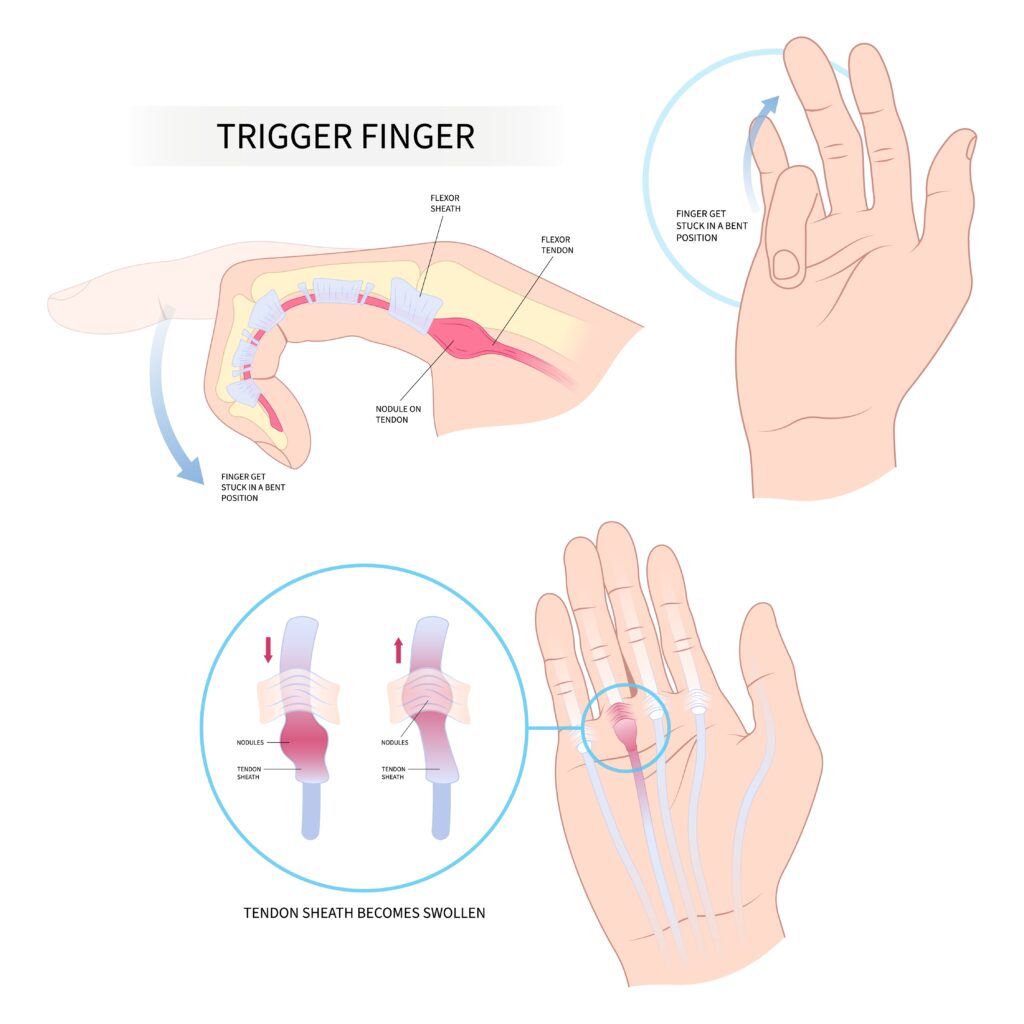
Subluxierendes Sagittalband Verletzung, häufig als „Boxerknöchel“ bezeichnet, tritt auf, wenn das Sagittalband die Strecksehne über dem MCP-Gelenk nicht stabilisiert. Diese Erkrankung tritt am häufigsten beim Langfinger auf, da dieser eine erhöhte Exkursion und erhöhte Traumaanfälligkeit aufweist. Klinisch berichten Patienten über ein Reißen oder Verschieben der Strecksehne bei Beugung und Streckung des MCP-Gelenks. Der typische Befund bei der körperlichen Untersuchung ist eine sichtbare oder tastbare ulnare Subluxation der Strecksehne bei Beugung und Streckung des MCP-Gelenks mit Widerstand (Rayan & Young, 2006). Schmerzen sind typischerweise dorsal über dem MCP-Gelenk lokalisiert, und es kann eine Schwellung vorhanden sein.
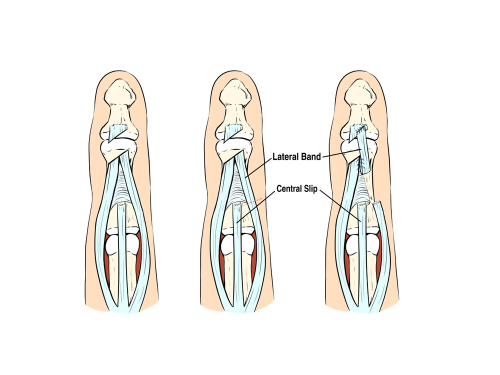
Subluxierendes Lateralband Verletzungen sind seltener und treten häufig bei Patienten mit Bindegewebserkrankungen (z. B. rheumatoider Arthritis) oder nach einem Trauma auf. Die lateralen Bänder, die zur PIP-Extension beitragen, können aufgrund von Rissen oder Laxheit der transversalen retinakulären Bänder volar oder dorsal subluxieren. Bei volarer Subluxation können die lateralen Bänder als Beuger des PIP-Gelenks und nicht als Strecker fungieren und so eine Knopflochdeformität imitieren. Bei der Untersuchung können Therapeuten eine PIP-Flexion mit DIP-Hyperextension und eine laterale Bandbewegung bei aktiver PIP-Flexion/-Extension beobachten. Palpation kann eine Bandinstabilität bei widerstandenen PIP-Bewegungen feststellen (Harris & Rutledge, 2016).
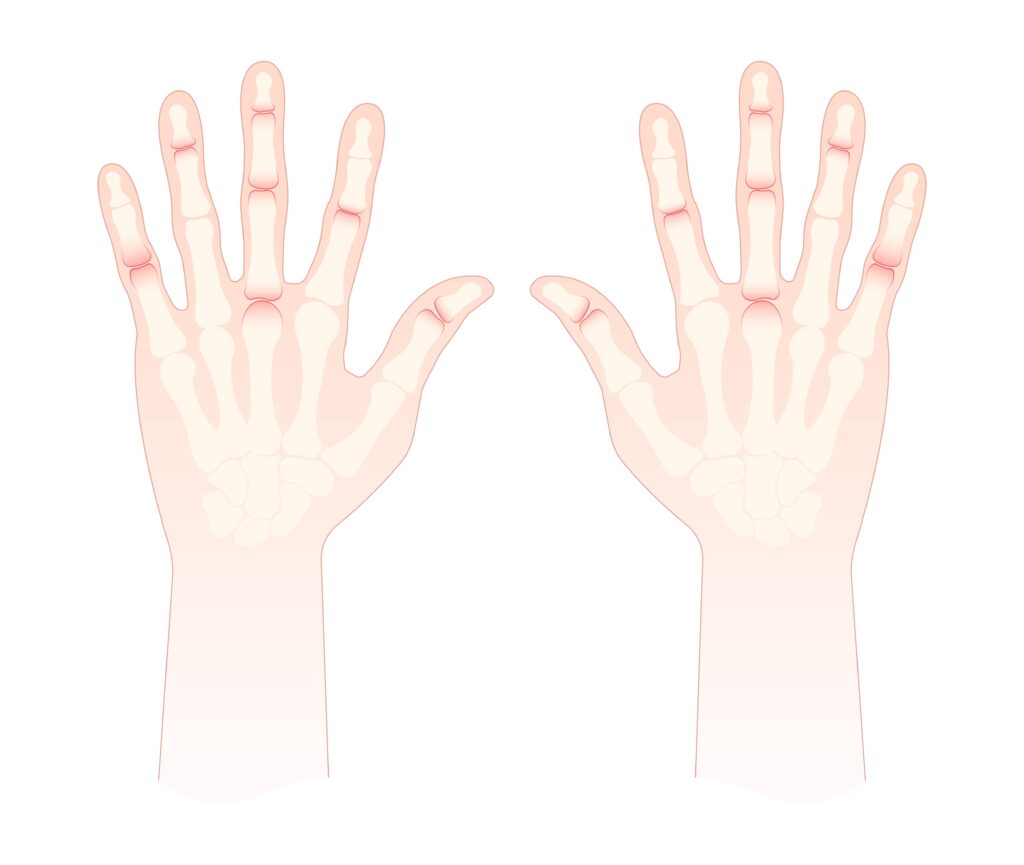
Diese Erkrankungen werden oft verwechselt, da sie alle mit Klicken, Schmerzen in der Nähe des MCP-Gelenks und Funktionsstörungen bei der Sehnenexkursion einhergehen können. Zum Beispiel: Subluxation Sagittalband kann imitieren auslösen Finger in frühen Stadien, wenn die Sehnenverschiebung ein Einklemmen verursacht. Ebenso Subluxation Laterale Bänder können mit einer sagittalen Banderkrankung verwechselt werden, wenn dorsale Schmerzen und Schnappgeräusche vorhanden, aber nicht richtig lokalisiert sind. Ohne eine gründliche Untersuchung können diese Erkrankungen falsch diagnostiziert werden, was zu suboptimalen Behandlungsergebnissen führt.
Um sie zu unterscheiden, sind Ort und Richtung der Sehnenverschiebung während der Widerstandsbewegung entscheidend. Auslösen Der Finger betrifft immer das Beugesehnensystem und ist volar tastbar, während Verletzungen des Sagittalbandes eine dorsale Instabilität am MCP verursachen und eine Subluxation des Lateralbandes die Mechanik des PIP-Gelenks beeinträchtigt. Provokationstests, wie z. B. Widerstand gegen die MCP-Extension (beim Sagittalband), aktive PIP-Flexion (beim Lateralband) oder Palpation am A1-Ringel während der Fingerbewegung (beim Schnellfinger), können helfen, die Pathologie zu isolieren.
Für eine genaue Diagnose ist auch die Berücksichtigung der Krankengeschichte des Patienten erforderlich. Verletzungen des Sagittalbandes sind häufig die Folge eines Schlag- oder Hyperextensionstraumas. auslösen Der Finger ist in der Regel atraumatisch und steht im Zusammenhang mit Überbeanspruchung oder entzündlichen Erkrankungen. Eine laterale Bandinstabilität kann mit systemischen Erkrankungen oder chronischer Gelenkbelastung zusammenhängen. Bildgebung, einschließlich dynamischer Ultraschalluntersuchungen, kann bei unklarer Diagnose weiterhelfen.
Zusammenfassend, obwohl auslösen Finger, Subluxation Sagittalbandverletzung und Subluxation Laterales Band kann ähnliche Symptome aufweisen. Das Verständnis der anatomischen Grundlagen und gezielte körperliche Untersuchungen ermöglichen eine genaue Differenzierung. Eine frühzeitige Erkennung ist entscheidend für konservative oder chirurgische Eingriffe und eine optimale funktionelle Erholung.
Verweise
Harris, A., & Rutledge, C. (2016). Handverletzungen: Ein praktischer Leitfaden zur Diagnose und Behandlung. Springer.
Makkouk, AH, Oetgen, ME, Swigart, CR, & Dodds, SD (2008). Triggerfinger: Ätiologie, Beurteilung und Behandlung. Aktuelle Rezensionen in der Muskuloskelettalen Medizin, 1(2), 92–96. https://doi.org/10.1007/s12178-008-9012-1
Rayan, GM, & Young, BT (2006). Boxerknöchel: Diagnose und Behandlung. Das Journal of Hand Surgery, 31(8), 1383–1388. https://doi.org/10.1016/j.jhsa.2006.05.009
Wolf, JM, & Delaronde, S. (2009). Dynamische Ultraschalluntersuchung von Sagittalbandverletzungen. Journal of Hand Surgery, 34(4), 712–715. https://doi.org/10.1016/j.jhsa.2009.01.007
3 Kommentare
Hinterlassen Sie einen Kommentar
Mehr zum Lesen
Alles über kinesiologisches Taping bei Verletzungen und Beschwerden der oberen Extremitäten!
Alles zum Thema Kinesiologie-Taping! Elastic ist auch als K-Tape, Kinesio-Tape und kinesiologisches Taping bekannt. Elastisches Klebeband gibt es überall auf dem Markt und wird häufig bei Profisportlern eingesetzt. Es ist in den meisten Therapiekliniken zu finden und wird zur Behandlung sowohl orthopädischer als auch neurologischer Erkrankungen eingesetzt. Es gibt nur begrenzte Studien, die den Einsatz von… belegen.
Mehr lesenSchienen vs. Dehnen nach einem Schlaganfall zur Behandlung von Handspastik
Schienen versus Dehnen zur Verbesserung der Handfunktion und Reduzierung der Handspastik nach Schlaganfall Referenz: Ahmad Khan, M. & Singh, P. (2018, Februar). Wirkung von Handschienen im Vergleich zu Dehnübungen zur Reduzierung der Spastik und Verbesserung der Handfunktion bei Hemiplegie nach Schlaganfall: Eine vergleichende Interventionsstudie. Abgerufen am 4. Dezember 2022 von https://www.ijotonweb.org/article.asp?issn=0445 -7706;year=2018;volume=50;issue=4;spage=125;epage=129;aulast=Khan The Skinny: Eine vergleichende Studie von Khan…
Mehr lesenBeugesehnenrehabilitation im 21. Jahrhundert: Eine systematische Übersicht
Neiduski, RL & Powell, RK (2019). Beugesehnenrehabilitation im 21. Jahrhundert: Eine systematische Übersicht. Journal of Hand Therapy, 32, 165-174. The Skinny Das Ziel der Studie bestand darin, festzustellen, ob es Belege gibt, die eine Art von Trainingsprogramm unterstützen. Zu den überprüften Übungsplänen gehören Place and Holds, frühe passive oder…
Mehr lesenTherapeutische Interventionen und Kontraindikationen des Schröpfens
Von Kaylen Kallander Bei der Schröpftherapie wird Unterdruck auf einen lokalisierten Bereich mit Muskel- oder Nervenschmerzen ausgeübt, um den Nervendruck zu lindern und die Durchblutung eines betroffenen Bereichs zu erhöhen. Diese Methode wird häufig bei Sportlern angewendet, ist aber auch eine häufige Behandlung in der Physiotherapie, Ergotherapie oder Handtherapie. Während Schröpfen…
Mehr lesenMelden Sie sich an, um Updates direkt in Ihren Posteingang zu erhalten!
Melden Sie sich bei uns an und wir senden Ihnen regelmäßig Blogbeiträge zum Thema Handtherapie, Benachrichtigungen jedes Mal, wenn wir neue Videos und Tutorials hochladen, zusammen mit Handzetteln, Protokollen und anderen nützlichen Informationen.




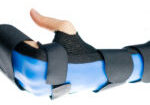
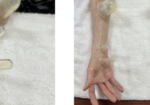

Danke für das Teilen!
Was für eine großartige, prägnante Aufschlüsselung der drei unterschiedlichen Erkrankungen, die sich ähnlich präsentieren. Vielen Dank fürs Teilen!
Danke für diese prägnante Zusammenfassung 👍🏻